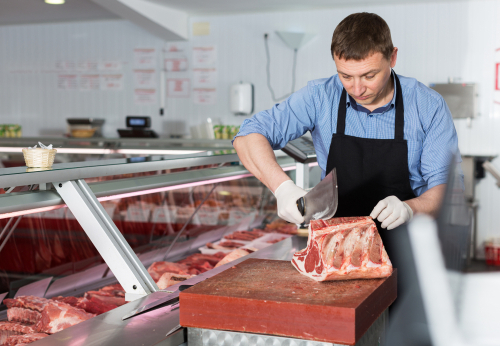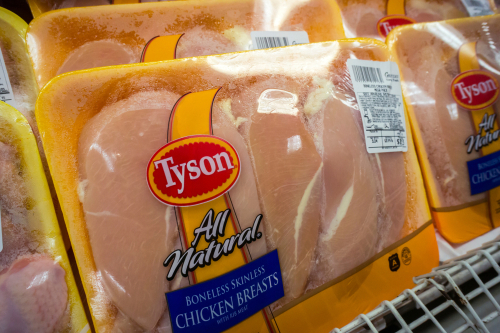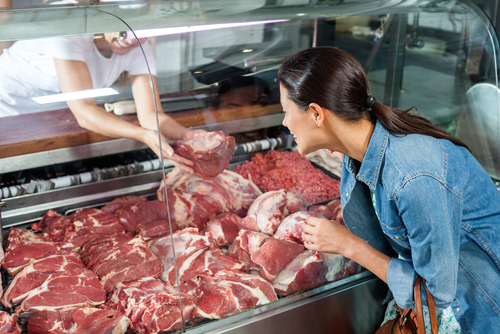Are you headed to the supermarket or local butcher shop? Read today’s post first for some important reminders when buying meat.
A top consideration when buying meat is to ensure that it’s safe for human consumption. Learn about what to look for next time you’re buying meat at the supermarket or butcher shop.
Information Listed on the Label

All packages of meat specify what type it is – whether it’s chicken, beef, pork, lamb, etc.
The labels also further define the part of the animal the meat is from and what type of cut it is (porkchop, t-bone, round steak, etc.)
You will also see the price per pound, weight, the total cost of the meat product, and sell-by date on the label. Make sure you’re only buying meat before the sell-by date. Never go over this important date.
The other helpful information found on the label or safe handling guidelines is nutritional information, preparation information, and the country of origin, if applicable.
Stamps: Meat Grading and Meat Inspection
You will find two stamps on meat packages. One is the meat inspection stamp from the Food Safety and Inspection Service of the United States Department of Agriculture (FSIS-USDA).
Since the 90s, the USDA has strictly implemented that all meat products undergo inspection. If a package of meat has a stamp from the USDA, it means the product has passed careful examination and scrutinization by the agency and is safe for human consumption.
All meat and poultry products will have the USDA inspection stamp. However, if you’re buying meat from places other than the supermarket or butcher shops, know that the meat products may not be safe to eat.
Another stamp you will see on meat packages is the meat grading stamp. This shows the palatability or quality of the meat. Meat processors are not required to have their meat graded. It’s their initiative to show the quality of the meat and to attract sales.
Use Your Senses to Check the Meat
When buying meat, don’t just use your eyes. Make sure the meat products are firm to the touch. See if the packaging has any holes, tears, or too much liquid. The products must also be cold to the touch. Meat products also shouldn’t have any unpleasant odor.
Checking Pork
Pork should show a slightly pink and red color. Never buy pork that is too pale. The fats should be white in color. Watch out for any dark discolorations.
Checking Beef
Look for beef that’s bright red in color. If the meat you’re buying is sealed and packaged in a bag, the color is going to change to a darker red and purple. Once the package is opened, and the beef is exposed to air, the color will change to a brighter red.
Ground Meat
The information on the labels of ground meat packages is somewhat different from other cuts of meat. The packaging on ground meat will show the percent fat percent lean if the meat. For instance, ground beef will show 20% fat and 80% lean.
Lamb
Lamb meat must show a slightly pink to red color. If you see any marbling or fat, make sure it’s white in color.
Chicken and Turkey
Never buy poultry (chicken, turkey) products that are gray, purple, or green in color, especially around the bone and cartilage parts. Choose chicken and turkey that are pink in color.

Additional Helpful Tips When Buying Meat
Local butcher shops and supermarkets will usually put meat products on discounted prices when they are closer to their sell-by date. You can still safely purchase these products as long as you are planning to cool them that same day. This is a fantastic way to save on your weekly grocery budget.
When buying meat and poultry at the supermarket, make sure you are getting the perishable items last. Gather all your nonperishable items first, then proceed to head to the meat and poultry section of the grocery store. Also, make sure the meat and poultry products are bagged separately from your other grocery items. This ensures the prevention of cross-contamination.
After buying meat at the store, make sure you are going straight home so you can store the items properly. If you must make a stop or two, limit them to as few as possible. The goal is to get home promptly to put the meat products in the fridge or freezer for storage.
